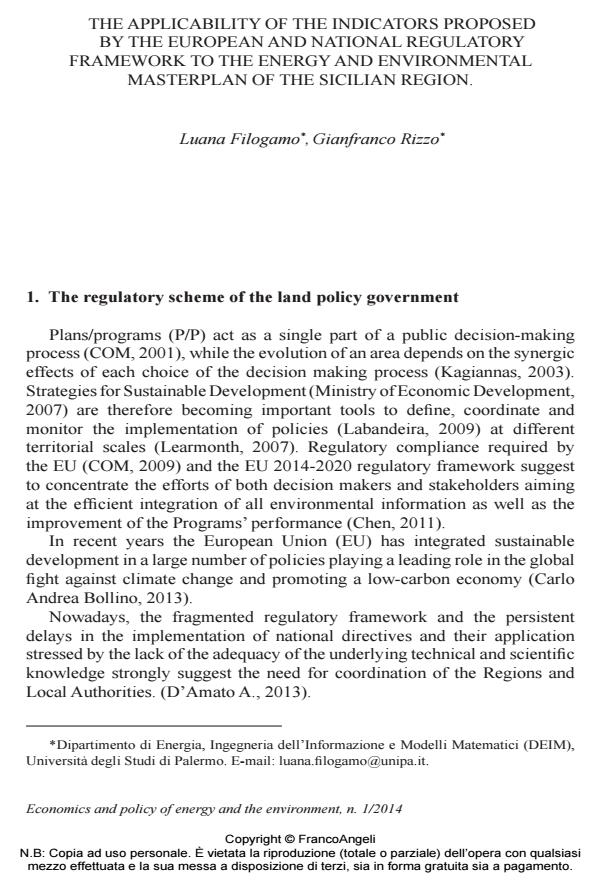The applicability of the indicators proposed by the European and national regulatory framework to the Energy and Environmental Masterplan of the Sicilian Region.
Titolo Rivista ECONOMICS AND POLICY OF ENERGY AND THE ENVIRONMENT
Autori/Curatori Luana Filogamo, Gianfranco Rizzo
Anno di pubblicazione 2014 Fascicolo 2014/1
Lingua Inglese Numero pagine 22 P. 145-166 Dimensione file 263 KB
DOI 10.3280/EFE2014-001007
Il DOI è il codice a barre della proprietà intellettuale: per saperne di più
clicca qui
Qui sotto puoi vedere in anteprima la prima pagina di questo articolo.
Se questo articolo ti interessa, lo puoi acquistare (e scaricare in formato pdf) seguendo le facili indicazioni per acquistare il download credit. Acquista Download Credits per scaricare questo Articolo in formato PDF

FrancoAngeli è membro della Publishers International Linking Association, Inc (PILA)associazione indipendente e non profit per facilitare (attraverso i servizi tecnologici implementati da CrossRef.org) l’accesso degli studiosi ai contenuti digitali nelle pubblicazioni professionali e scientifiche
Indicators are useful working tools for the plans to monitor their progress as well as to check ex-post the results achieved. There is a large corpus of indicators, both at European and national Italian levels which designers and planners can refer to. However, it is worth verifying the effectiveness of general validity parameters when applied to a specific limited territorial area. This paper faces this problem, with a focus to the Energy and Environmental Plan of the Sicilian Region (PEARS) and compares the themes proposed at the European (Eurostat) and the Italian national (ISPRA) levels with those adopted for the enforcement of PEARS. The Headlines indicators (Eurostat) are here used as an instrument measuring the applicability at a regional level in order to verify the degree of achievement of the objectives proposed by PEARS. The comparison shows that the top-down scheme is unable to verify the results achieved. The indicators must be rather selected more in detail according to a buttom-up scheme able to understand in depth the need of the area under examination.
Parole chiave:Indicators, Sustainable Development, Energy Policy, Regional governance, Energy policy, Environmental indicators
Jel codes:Q48, Q56, R58
Luana Filogamo, Gianfranco Rizzo, The applicability of the indicators proposed by the European and national regulatory framework to the Energy and Environmental Masterplan of the Sicilian Region. in "ECONOMICS AND POLICY OF ENERGY AND THE ENVIRONMENT" 1/2014, pp 145-166, DOI: 10.3280/EFE2014-001007